19 Ceiling Texture Types to Satisfy Your Eye & Decor Style
Author: Rick Worst | Editor: Omar Alonso
Review & Research: Jen Worst & Chris Miller
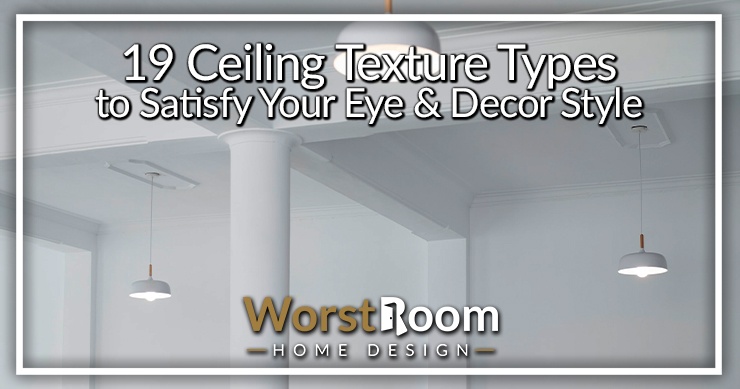
Picking the right ceiling texture types is one of the most impactful decisions you can make when you're choosing finishes for your home.
Different ceiling textures have the ability to change the entire focus of a space, so choosing the right one can feel overwhelming. Like every other design choice, there seems to be an endless list of possibilities.
19 Ceiling Texture Types
We've compiled some of the most popular types of ceiling textures and explained a bit about how to achieve them. Before you choose which texture you'd like to use, browse through this list to make sure you know which options are available to you for your specific types of ceilings.
Smooth Ceiling Texture
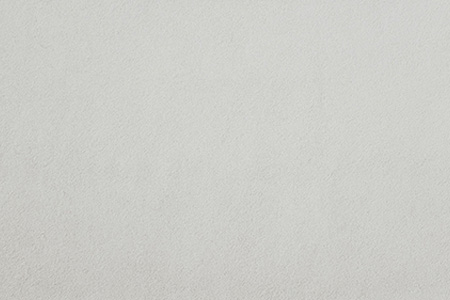
A smooth ceiling texture is undoubtedly the most popular aesthetic for most modern homes. And with good reason. Applying a smooth texture to the ceiling makes it feel higher than it actually is. Also, because your eyes don't get drawn to look up, the space you're in feels more open.
While it is the most simple texture to look at, it's not quite so simple to achieve. Applying a smooth ceiling texture is definitely a job for a seasoned professional. It takes a lot of practice to master a perfectly thin and even layer of drywall mud.
Smooth ceiling texture styles are also not forgiving when it comes to masking imperfections, so if you choose this texture, you're going to want to make sure that you start with a nearly perfect base to build off of.
Comb Ceiling Texture
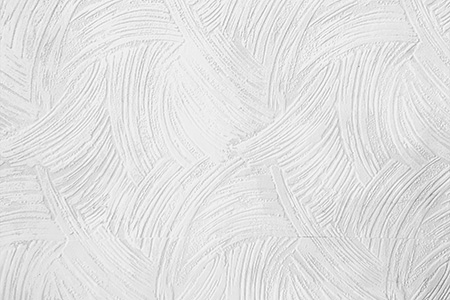
You can achieve a comb ceiling texture by applying a layer of drywall mud to the ceiling and dragging a combed edge trowel through the mud before it has dried. You can achieve this technique in a variety of design patterns.
For example, if the teeth of the trowel are more pronounced, it can give a striking look, and if they are small, the look can be more subtle. Among the different ceiling textures, these are simple to create and look great.
This particular look can work well in both modern and traditional spaces. There are so many choices regarding the type of pattern you can choose when applying a combed texture.
A more geometric pattern can fit in well with modern design concepts, and a rounded edge pattern can suit a warm, traditional space.
Knockdown Ceiling Texture
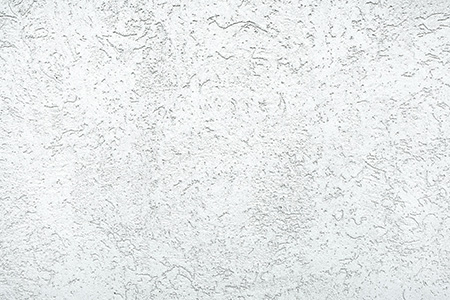
These ceiling texture types are created by either rolling, spraying, or hand spreading watered-down drywall mud onto the ceiling. This method's high water content helps the compound form sharp pointy peaks.
Once these peaks form, they're scraped over with a tool called a knockdown knife. The resulting texture after scraping is the knockdown texture.
Knockdown ceiling texture is one of the top choices for those looking to hide imperfections. Because the texture is random, it disguises blemishes well. Overall this texture is unobtrusive to the eye and lends itself well to any design style.
Slap Brush Texture
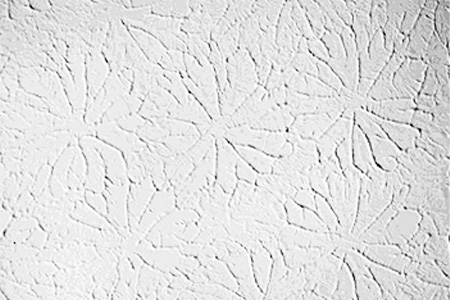
Slap brush ceiling texture looks stunning in traditional-style homes. This ceiling texture requires what the name implies, a brush. The types of paint brushes used for this technique have rigid bristles that are spaced in a specific way to achieve the desired look.
Once you apply the drywall compound to the ceiling, you'll use the brush in a slapping motion to create a burst of these ceiling texture styles.
This ceiling texture looks deceivingly simple, but it's best to leave it to more experienced drywall finishers. If the brush slaps are not applied evenly or with the same pressure, you can lose the texture, and the look of the ceiling will appear messy. And keep it off of whatever types of crown molding you have or wipe it off while it's still wet.
Tree Bark Texture
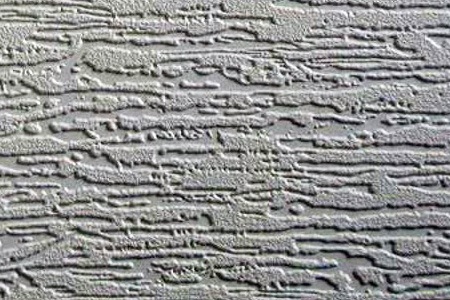
One of the more unique texturing methods on this list is the tree bark method. The method's name tells you most of what you need to know about the look.
It produces a pronounced pattern that closely resembles the bark on a tree. These types of ceiling finishes look best in older homes or homes where imperfections may need to be covered.
Tree bark texture is relatively easy to apply. All you need is drywall mud and a tree bark texture roller. You cover the roller in the drywall mud and then apply it to the surface of the ceiling slowly and smoothly. The resulting texture brings a beautiful and uncommon look to the space.
Orange Peel Texture
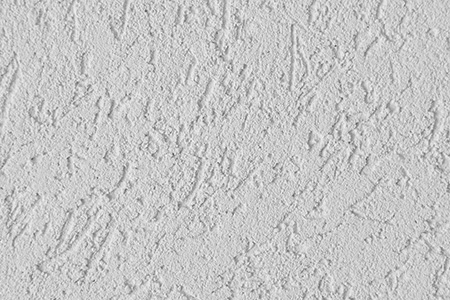
Orange peel ceiling texture types are another common choice for homeowners. One of the main reasons for this is the ease with which you can apply it.
Unlike some of the other textures on this list, the orange peel method only requires one step, which is to spray the drywall compound in a thin and even layer. The resulting look matches the texture of an orange peel, which is the reason for the name.
This choice is excellent for homeowners on a budget, as the application of this texture is visually forgiving and requires minimal labor compared to other options.
Lace Ceiling Texture
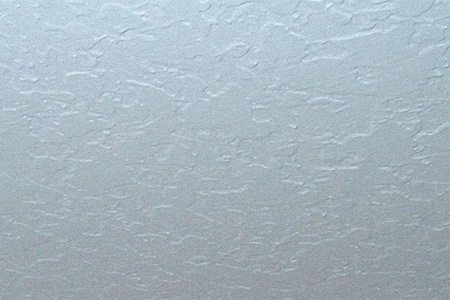
Lace ceiling texture is one of the more opulent texturing methods included on this list. Unfortunately, it's also one of the more complicated patterns to achieve.
First, you'll apply a thin layer of a compound in a light color to the ceiling. Next, you'll apply another layer in a slightly darker tone of the same color on top.
Finally, the peaks of the second layer get knocked away using a knockdown knife to achieve a texture that closely resembles actual lace.
This method is best suited for rooms with a lavish design aesthetic. For example, a lace ceiling texture would complement a style like French country decor. Among the different ceiling textures, the lace texture might be the most elegant.
Swirled Ceiling Texture
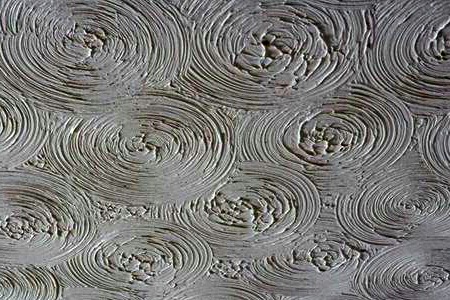
As you can probably guess from the name, this texture produces a delicate swirled pattern on the ceiling. A thin layer of drywall compound gets applied to the ceiling, and before it dries, you'll use a trowel to drag a circle in the compound lightly.
The resulting pattern is one of soft swirls that brings a fresh feeling to the room. Achieving a properly spaced swirled texture can be difficult for beginners, so it's best to hire a professional and not attempt to DIY.
Also, the swirl types of ceiling textures looks best in larger rooms, as it can appear to be a little too busy in smaller spaces.
Rosebud Ceiling Texture
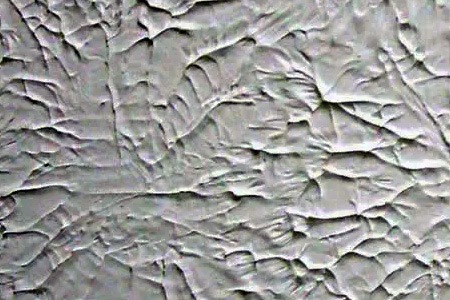
If you're looking for a texture that highlights your ceiling without making it the room's focal point, then rosebud ceiling texture may be the right choice for you.
This pattern is created by applying an even layer of drywall mud and then stamping it with a round, stiff brush. The stamping motion leaves behind a texture that looks similar to a rosebud.
These ceiling texture types are one of the easier options to do yourself. If you make any mistakes during the application, they can easily be smoothed away and then stamped again until you're able to achieve the desired look. A rosebud texture is a good choice for homes with a more classical style.
Popcorn Ceiling Texture
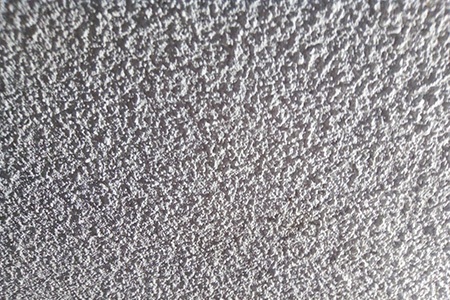
No ceiling texture list would be complete without mentioning the infamous popcorn texture. This method was widely used throughout the 1960s all the way until the 1990s. It was asbestos used as a binding agent in these classic ceilings that made it fall out of favor. But now it's made more safely and is coming back.
One of the reasons it featured in so many homes is because of how easy it was to install. Creating the popcorn ceiling texture patterns merely requires mixing the compound and then spraying it on.
One of the advantages of this particular texture is that it is great for hiding blemishes in drywall work. Also, if there are any irregularities in your ceiling, a popcorn texture is sure to cover it up.
Finally, while the look of popcorn ceilings has fallen out of favor for most homeowners, it can bring a nostalgic feeling to any room it's applied in.
Santa Fe Ceiling Texture
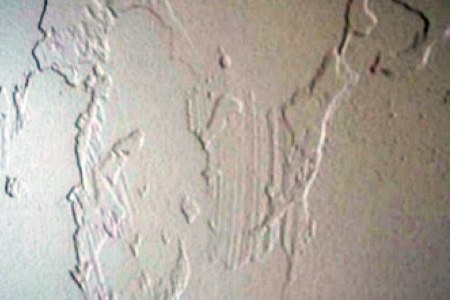
The Santa Fe type of ceiling texture resembles the skip trowel texture below, except that here you're going to spread the putty further and leave less "divots" of raw ceiling above.
The idea is to have more smooth surface and less of the textured surface here. The opposite goes for the skip trowel type of ceiling texture.
Fish Scale Texture
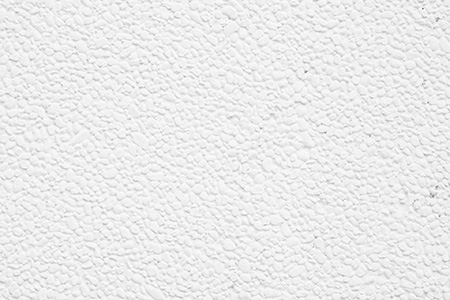
Fish scale ceiling texture is another of the more lavish options on this list. It is an eye-catching texture that demands attention from the moment you enter a space.
This look is created by applying a thin layer of drywall compound and then expertly using a trowel to drag a semicircle pattern. These types of ceiling finishes make me think of a home from many decades in the past.
The semicircles appear in perfectly layered rows that produce a look similar to fish scales. This texture is almost impossible for anyone but a professional to achieve, so if you're considering using it, make sure to consult a drywall expert.
Because the fish scale texture draws so much attention, it looks best in spaces that have smooth walls and minimalist decor. However, if you decide to use this texture in a heavily decorated room, things can feel crowded and overdone.
Skip Trowel Texture
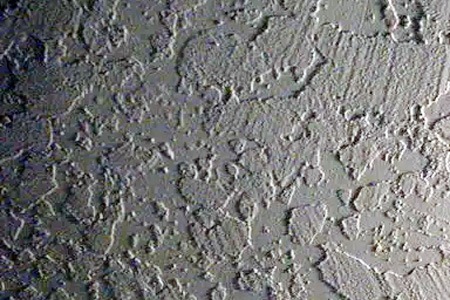
A properly applied skip trowel ceiling texture can make a space feel warm and cozy. This method is one of the more common choices for ceiling texture, and you'll typically find it anywhere from old Italian villas to newly built suburban homes.
The method to produce these ceiling texture types is simple, but it can require some practice before you're able to create a uniform look.
Like with most other ceiling textures, you'll apply a thin layer of drywall compound to the ceiling, then the flat edge of a trowel is lightly dragged over the wet mixture. This method creates a look where some areas are smooth, and the skipped areas stand out.
Stomp Ceiling Texture
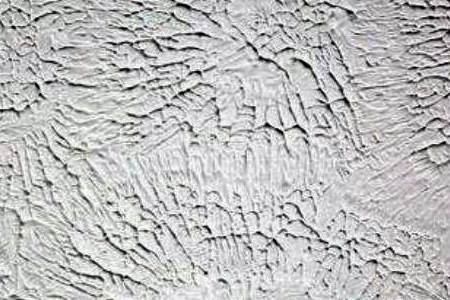
To apply the stomp ceiling texture patterns, you'll need to use a roller first to apply the base and then add the pattern using a stomp brush.
We've described the method already so you should be familiar with it. If you keep the pattern tight you can also create the crows foot ceiling texture (there's not much difference, honestly).
What you'll do is take your drywall joint compound or spackle and thin it with water so it can be rolled on. This also is what allows for the texture to occur. Expect this stuff to drip off the roller and brush, so please cover your floor and baseboards with plastic.
Stipple Brush Texture
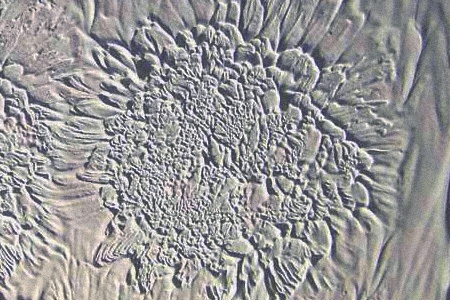
The stipple brush type of ceiling texture is one of the more DIY-friendly texturing methods. First, you'll spread a layer of the compound onto the ceiling. Next, you'll use a soft-bristled brush in a stippling motion to create peaks throughout the drywall compound.
The resulting ceiling texture pattern is random and, therefore, easy to apply across the entire ceiling without having to worry about maintaining a uniform look.
Stipple brush texture can be difficult to paint over once you've applied it on a surface, so if you're considering this method, you may want to think about renting a paint gun to give your ceiling texture patterns their finishing touches.
Sheetrock Ceiling Texture
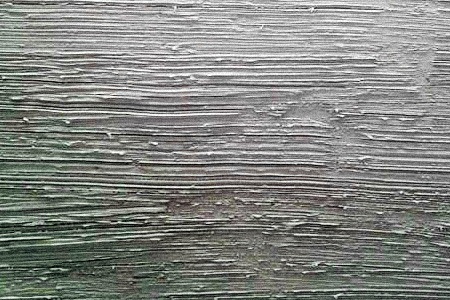
Sometimes called drywall ceiling texture types, the sheetrock type is made by scraping putty over the types of drywall you have overhead. You won't spray it or even use any kind of specialty brush. You'll use you spatula or tray to scrape the spackle across to create these ceiling texture styles. Make sure you let the spackle dry for a sufficient amount of time before touching it.
This results in not only a bit of depth but also in having lines moving across. The idea is that you have some dry material on your scraper tool already, so when you use it to spread the mud across the ceiling it'll leave lines.
Hawk & Trowel Ceiling Texture
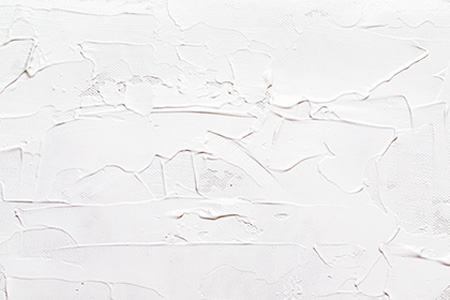
To attain this look (and this will come as no surprise to you), you'll be using the hawk tool and a trowel tool. Basically what you're doing is taking putty and placing a good amount of it on the ceiling and then pressing it flat.
The result is many flat surfaces of varying shapes, and most importantly, different heights. When we say height, we're only talking about millimeter differences and nothing more drastic than that. But that texture and depth will do a wonder with the lighting.
Skim Coat Ceiling Texture
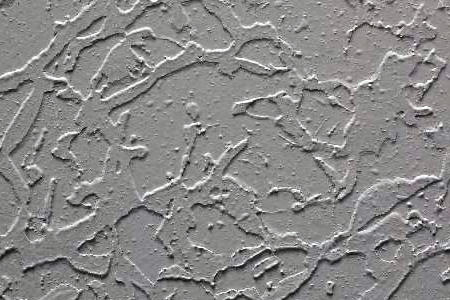
The skim coat types of ceiling textures could be more appropriately named a thin coat. It's almost like a coat of paint (putty being one of the paint alternatives). It's very easy to apply and takes no special skill other than patience around the borders.
Many who choose this look will opt for a different color than that of the walls so there's more contrast. I'd recommend a bit darker color than the walls rather than a lighter color paint. These are very simple types of ceiling finishes that can look minimal and modern.
Spray Sand Ceiling Texture
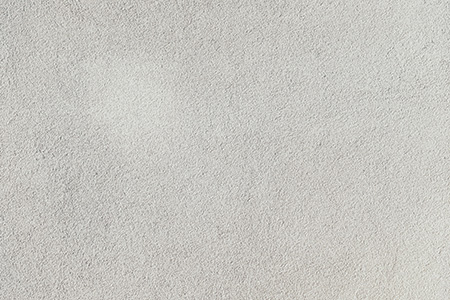
The spray sand texture looks a lot like the orange peel or even popcorn variety to a degree. It's not that popular these days. It can be applied by spraying or by smoothing it on and then sponging texture into the surface.
Ceiling Texture Types to Enhance Your Interior Decor
As with all things related to home design, the list of possibilities for types of ceiling textures is as endless as your own creativity. Each of the textures listed above has the ability to alter the atmosphere of your space, so make sure you choose one that matches your overall aesthetic.
If you're feeling unsure, think about creating a small sample to attach to your ceiling to give you an idea of what the ceiling texture types will actually look like after application.



